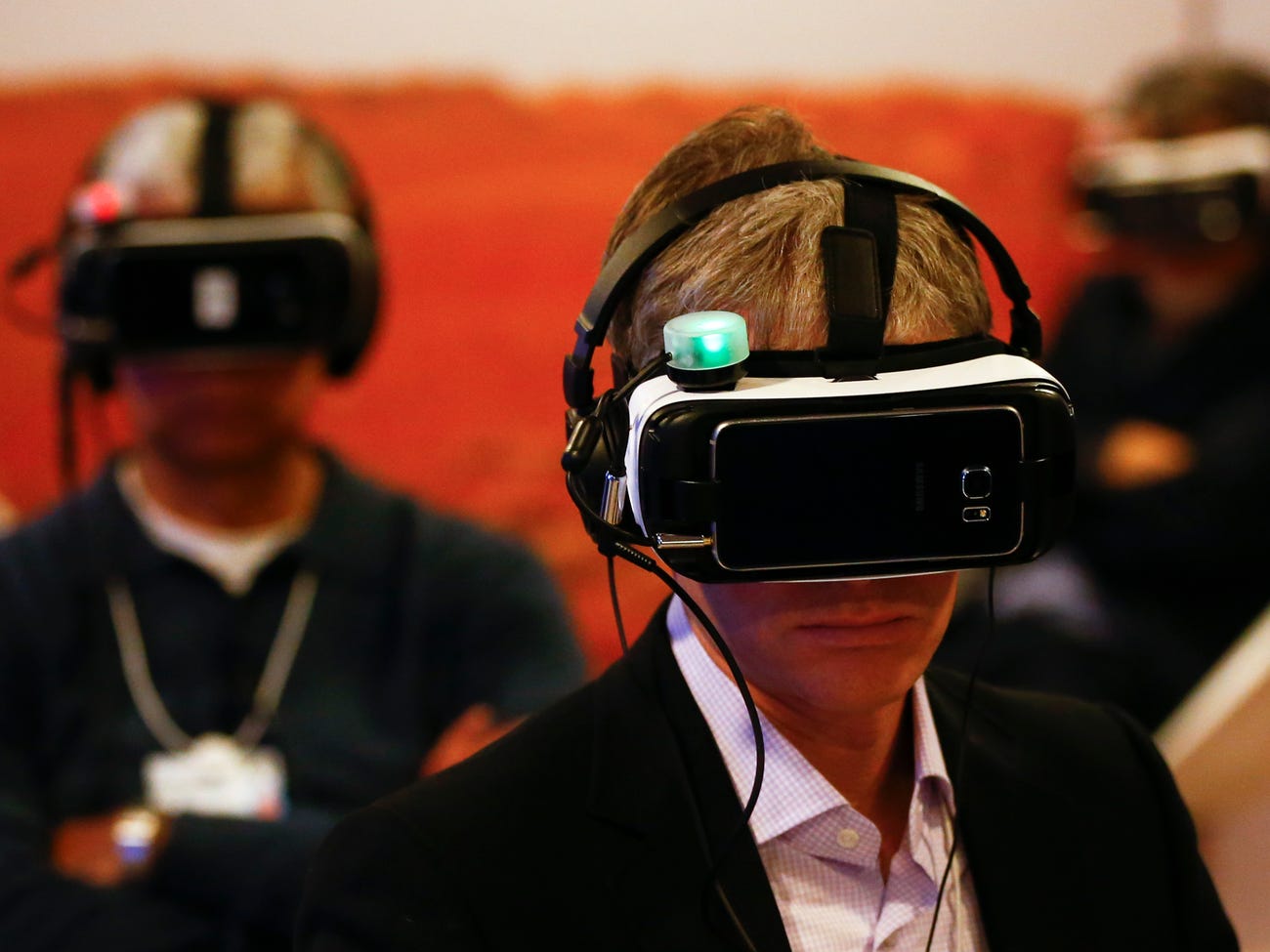Here’s How Top Companies Are Using VR to Connect and Train Their Teams From Around the World
Virtual reality is enabling major companies to train workers and connect teams from around the world, from automotive design to financial and professional services.
- Virtual reality opens up new opportunities for companies to connect with and train remote workers while reducing risks in some high-stakes work environments.
- Hyundai uses the technology to bring teams together, increase creativity, and help them consider safety risks in their vehicles.
- Accenture developed large VR pods in its Atlanta and San Francisco offices called Igloos that bring the audio and visual elements from VR glasses to a large audience of employees.
- Fidelity is exploring the implementation of VR to help its employees build soft skills like interpersonal communication.
- This article is part of a series “The Company Connection.”
Companies like Hyundai, Fidelity, and Accenture are investing in VR technology and seeing returns in terms of increased productivity and reduced risk.
Chris Chapman, Hyundai’s North American designer, told Business Insider that VR allows his team to be flexible with its designs and work together on projects, even when geographically apart.
“VR has enhanced our creativity,” Chapman said. “Anytime you can say that, it’s a huge success.”
VR simulations help Hyundai designers create more streamlined work, and see how the car would look in different settings, like on the street, in daylight, or at night.
It’s important that Chapman’s team gets things right for consumers, whose very lives depend on the safety of Hyundai’s designs.
A platform like virtual reality allows remote workers to contribute more effectively in these high-stakes work environments.
Shaping soft skills with virtual experiences
High-stakes situations don’t apply exclusively to engineering and design. Some of the most complicated challenges companies face are interpersonal interactions.
“There is a better way of communicating where you’re getting your point across more and you’re able to better interact with people,” said Adam Schouela, who leads the emerging technology group within the Fidelity Center for Applied Technology.
Fidelity hasn’t yet applied VR specifically for remote workers, but Schouela says the communication functionalities VR offers would make it a better way for those teams to carry out their responsibilities.
Schouela prefers that new tools displace technologies that are already used in the workplace. Rather than create a new niche, these technologies should ideally add business value in existing areas.
“We’ve probably built 30, 40 different virtual-reality experiences in order to understand all of this stuff and, really, truly see where we can apply these technologies internally within Fidelity and have it make a difference,” Schouela said.
“The idea is not just to do this because it’s cool,” he added.
VR is more than a set of goggles
For many companies’ first foray into virtual reality, the typical hardware choice is Facebook’s Oculus line of ski-goggle-like screens.
However, when Accenture sought a VR solution to connect its 500,000 employees around the world, the estimated costs were staggering.
Instead, the company developed office-sized pods it calls Igloos that take the audio and visuals from VR glasses and make them big enough for an audience to collectively experience.
Mary Hamilton, a managing director and the head of Accenture Labs in the Americas, told Business Insider that the Igloos are presently only in Accenture’s Atlanta and San Francisco innovation hubs.
But soon, teams across states or continents could pop into a room and interact with each other as though they were together in person.
“It’s easy to see how this could fundamentally affect how our company does business,” Hamilton said.
Source: businessinsider.com




